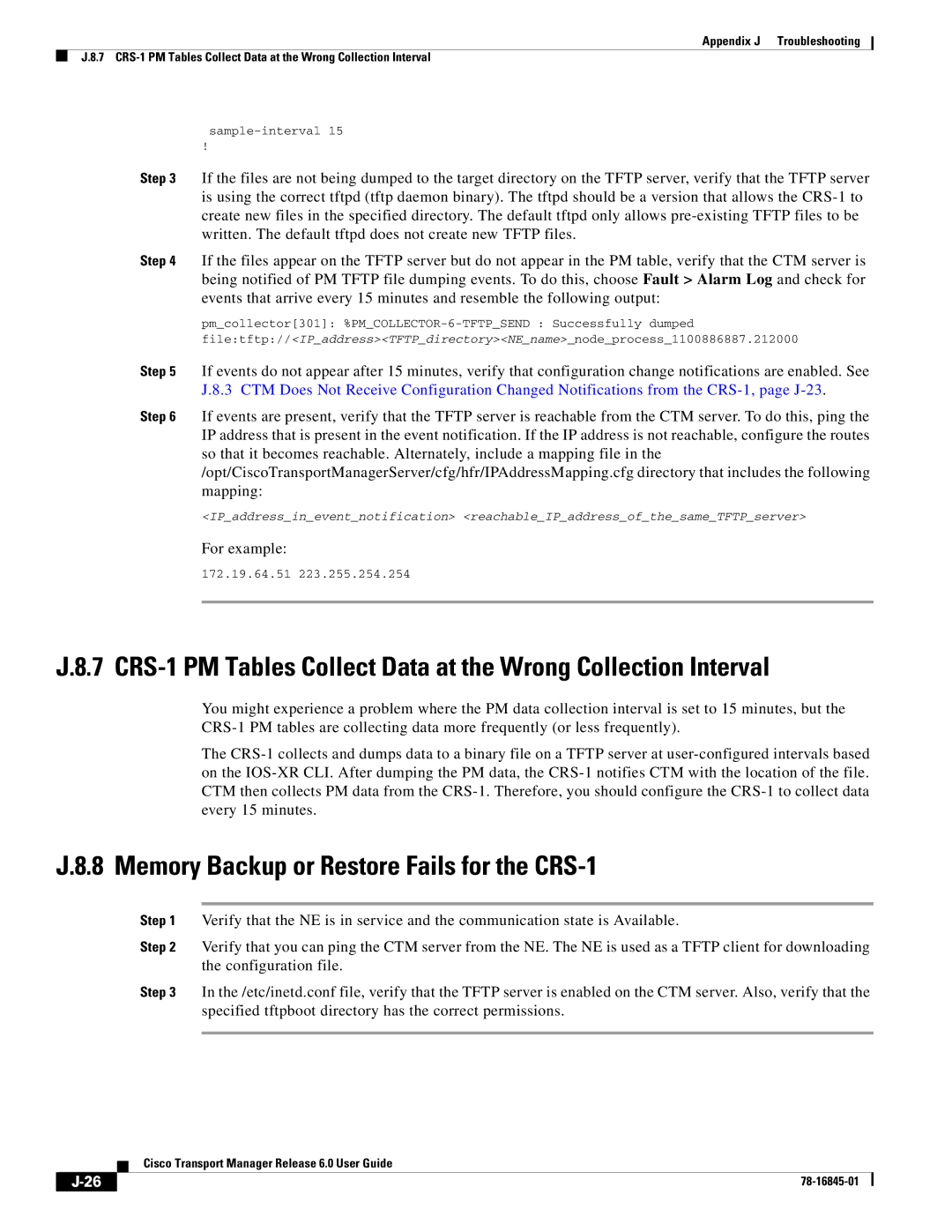
Appendix J Troubleshooting
J.8.7
!
Step 3 If the files are not being dumped to the target directory on the TFTP server, verify that the TFTP server is using the correct tftpd (tftp daemon binary). The tftpd should be a version that allows the
Step 4 If the files appear on the TFTP server but do not appear in the PM table, verify that the CTM server is being notified of PM TFTP file dumping events. To do this, choose Fault > Alarm Log and check for events that arrive every 15 minutes and resemble the following output:
pm_collector[301]:
file:tftp://<IP_address><TFTP_directory><NE_name>_node_process_1100886887.212000
Step 5 If events do not appear after 15 minutes, verify that configuration change notifications are enabled. See J.8.3 CTM Does Not Receive Configuration Changed Notifications from the
Step 6 If events are present, verify that the TFTP server is reachable from the CTM server. To do this, ping the IP address that is present in the event notification. If the IP address is not reachable, configure the routes so that it becomes reachable. Alternately, include a mapping file in the /opt/CiscoTransportManagerServer/cfg/hfr/IPAddressMapping.cfg directory that includes the following mapping:
<IP_address_in_event_notification> <reachable_IP_address_of_the_same_TFTP_server>
For example:
172.19.64.51 223.255.254.254
J.8.7
You might experience a problem where the PM data collection interval is set to 15 minutes, but the
The
J.8.8 Memory Backup or Restore Fails for the CRS-1
Step 1 Verify that the NE is in service and the communication state is Available.
Step 2 Verify that you can ping the CTM server from the NE. The NE is used as a TFTP client for downloading the configuration file.
Step 3 In the /etc/inetd.conf file, verify that the TFTP server is enabled on the CTM server. Also, verify that the specified tftpboot directory has the correct permissions.
Cisco Transport Manager Release 6.0 User Guide
|
| ||
|
|
